When I read for the Hugos, I like to write a full review for each novel and novella that I finish, but I also like to finish all of my reviews from a given calendar year by the end of that year, and so here I am. There’s not a whole lot of December left, and the backlog is large by my standards. Time for some short takes.
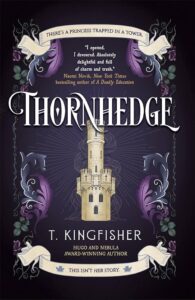
In Thornhedge, T. Kingfisher retells Sleeping Beauty from the point of view of a fairy whose task is to guard the hedge. It’s not a demanding task, which is good, because she spends much of the year nearly hibernating in frog form, happily ensconced in the muck at the base of the thorns. Kingfisher moves the story back and forth through time, inviting readers to consider reasons other than malice why Beauty might be left asleep and unattended. All is well and good for a long time, especially once trade routes change and Beauty’s castle is nearly forgotten. The fairy is relieved that fewer knights come to test their mettle against the thorns; she was generally sad to see them lose, but not sad enough to keep them from losing. And then one day, many many years later a knight arrives who is more interested in the story, and in the fairy. He is a Muslim and a scholar, a younger son of whom not much is expected. He and the fairy like each other, help each other, and so naturally things start to go awry. It’s unfair to say that I liked Nettle & Bone, the other Kingfisher story I’ve read recently, better — one has the full space of a novel to open out, the other is a novella; one is constrained by the tale it retells, the other has fairytale antecedents but gives free rein to Kingfisher’s preferences — but I did. Considered on its own, Thornhedge is charming but a bit distant. I liked the knight’s family background: it gives him a different motivation, a different perspective. When the knight and the fairy — sometimes in frog form but mostly in young-woman form — start to have their adventure, they’re an amiable and companionable pair, with the traditional roles considerably diluted, and when they flow back it’s mostly to comic effect. The ending is tense, and satisfying. Thornhedge was a splendid way to spend some reading time. (Doreen’s review of Thornhedge is here; she liked it lots.)
Continue reading
Permanent link to this article: https://www.thefrumiousconsortium.net/2024/12/21/hugo-awards-2024-wrapping-up/
Okay, this might be the best of the covers Ten Speed Graphic has picked for its books recently but even this one barely hints at the charm of what lies inside, IMO.
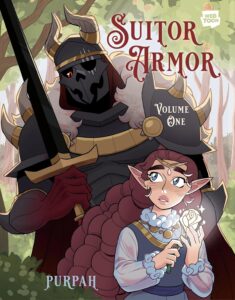 Suitor Armor is the tale of a young lady-in-waiting named Lucia, who’s been the companion and best friend of the king’s betrothed, Kirsi, ever since they were little girls. Unbeknownst to almost everyone — I’m still not 100% certain even Kirsi knows, tho I can’t see how she doesn’t — Lucia is actually a fairy, who’s grown up hiding her identity ever since Kirsi’s human dad brought her to live with his family.
Suitor Armor is the tale of a young lady-in-waiting named Lucia, who’s been the companion and best friend of the king’s betrothed, Kirsi, ever since they were little girls. Unbeknownst to almost everyone — I’m still not 100% certain even Kirsi knows, tho I can’t see how she doesn’t — Lucia is actually a fairy, who’s grown up hiding her identity ever since Kirsi’s human dad brought her to live with his family.
Now that Kirsi is grown up, she and Lucia live in King Reimund’s castle, preparing for Kirsi’s wedding. Kirsi doesn’t really know how to relate to her fiance, so perhaps drinks too much in order to while away the hours. She blames her fiance’s preoccupation with the human-fairy war for their awkward relationship, tho she tries her best to show an interest in the jousts and hunts he throws to amuse the court. At the latest tournament, his court mage Norrix unveils an enchanted suit of armor, to the chagrin of Reimund’s human champion, Sir Baynard. The animated armor has a fearsome, even demonic aspect but Lucia finds herself strangely drawn to the mechanical warrior. Soon, she finds herself learning more about him and how he was made, even as a fairy infiltrates the castle and makes life even more perilous for her than before.
Continue reading
Permanent link to this article: https://www.thefrumiousconsortium.net/2024/12/20/suitor-armor-vol-1-by-purpah/
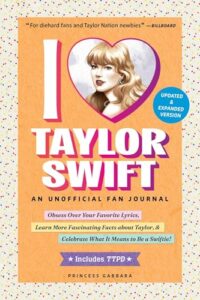 The Updated & Expanded Version!
The Updated & Expanded Version!
Okay, I have to admit it: I’m not a hardcore Swiftie. I love music, so I’ve definitely enjoyed listening to her stuff ever since We Are Never Ever Getting Back Together showed that she was embracing her sense of humor and not taking herself too seriously any more (unsurprisingly, my sister thought that song was psychotic, but she would.) I did buy copies of Reputation (amazing) and Lover (meh) to play in the car before I figured out how to stream music from my phone (Midnights 3AM version is straight bangers,) and have followed Ms Swift’s career and personal life with interest. I don’t have the psychological make-up to obsess over her or the disposable income to attend her Eras tour, but I do think that she’s a positive influence on the zeitgeist, especially after the lawsuit she pursued against the DJ who thought he could get away with groping her. It’s genuinely refreshing how she continually and publicly stands up for people who don’t have the resources that she does, whether through fighting the patriarchy or taking on greedy corporate interests trying to profiteer off of creators, simply because it’s the right thing to do.
Which is to say that I’m absolutely a fan, and it’s awesome if you’re one, too. This unofficial journal is great for all levels of being into Taylor Swift, tho is arguably more valuable the more you care about her. As a more casual fan, I learned a lot of interesting things from it about the artist, her music and her personal life. I suspect, however, that it’s the journaling and inspirational parts of this book that will likely most appeal to die-hard Swifties.
Continue reading
Permanent link to this article: https://www.thefrumiousconsortium.net/2024/12/19/i-love-taylor-swift-an-unofficial-fan-journal-by-princess-gabbara/
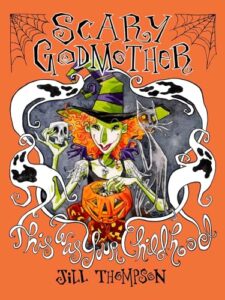 What a charm- and value-packed compendium of virtually all the Scary Godmother material published to date!
What a charm- and value-packed compendium of virtually all the Scary Godmother material published to date!
I knew of Jill Thompson from her work on Neil Gaiman’s Death and Endless properties for DC Comics, but hadn’t realized the extent of her oeuvre otherwise. In particular, I had no idea that her own original creation, Scary Godmother, had been made into a TV movie series! This compendium swiftly brought me up to speed, and provided hours of delight to someone who hadn’t been aware of how rich Ms Thompson’s body of work is before I started reading this hefty volume.
And there is a lot here, from the stories that inspired the movies, to multi-issue arcs, to short comics written both before and after that television heyday. Sprinkled throughout are recipes for kid-friendly Treats, and towards the end are bonus art and text, including a full-on slate of fun Halloween-themed activities for kids of all ages.
The stories themselves revolve around young Hannah Marie, who starts out in these pages as a little girl who’s just gotten old enough to go trick or treating with the big kids, including her selfish cousin Jimmy. While his friends help her keep up with them, Jimmy feels that her shorter legs and earlier curfew are preventing them from getting as much candy as he’d prefer. He thus decides to prank her by having her go into a haunted house alone, in hopes that it will cause her to go home early so that he and the rest of his friends can go trick or treating without her. Little does he know, however, that Hannah has a Scary Godmother who helps her see that the things that go bump in the night are a whole lot less frightful than a bunch of mean kids. Perhaps even more satisfyingly, Scary Godmother is ready to help Hannah turn the tables on said mean kids, and help everyone learn the true meaning of Halloween.
Continue reading
Permanent link to this article: https://www.thefrumiousconsortium.net/2024/12/18/scary-godmother-compendium-this-was-your-childhood-by-jill-thompson/
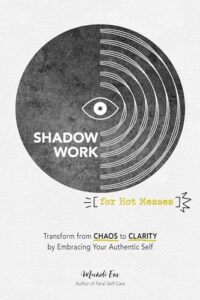 subtitled Transform From Chaos To Clarity By Embracing Your Authentic Self.
subtitled Transform From Chaos To Clarity By Embracing Your Authentic Self.
This book took me forever to read, and that’s a good thing. Despite being slender, with plenty of white space for readers to fill in with their own thoughts and responses to the prompts, it’s a very meaty volume for anyone genuinely interested in doing the work on making themself a better person.
Ofc the next question most people will ask is what is this work, and specifically what is shadow work? Mandi Em explains it much better than I do, but you know that weird kneejerk reaction you sometimes get that is definitely not you being your best self? Maybe it comes out in jealousy or anger or some other destructive — and often self-destructive — way, overwhelming your rational processes so that later you go, “whoa, I can’t believe I did that, and I’m not saying that in a good way, either.” That’s essentially your shadow self taking over, usually as a coping mechanism once learned in reaction to deep-seated trauma.
This workbook helps you take a look at yourself and figure out your own shadows, then walks you through the process of engaging with them, understanding what they’re rooted in and learning how to integrate them in a healthy manner. It is, thusly, A Lot. Ms Em approaches it all with humor and love, however, and strongly recommends getting professional help as well if possible. But if that help is not easily accessible or available, then this book is a spectacular way to get started on unlearning bad behavior via addressing what causes us to act in those manners. Perhaps most importantly, it teaches us how to be kinder to others by first of all learning to be kind to ourselves.
Continue reading
Permanent link to this article: https://www.thefrumiousconsortium.net/2024/12/17/shadow-work-for-hot-messes-by-mandi-em/
Hello, readers! Today we have an excerpt for you from a cozy mystery novel that’s been described as a blend of The Da Vinci Code and Murder She Wrote. The second book of the Ohnita Harbor mystery series finds our heroine once again compelled to help those who need it most, even if it puts her in mortal danger.
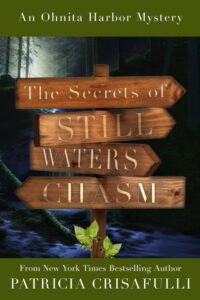 One beautiful September afternoon, a hike through the pristine wilderness of Still Waters Chasm becomes a path of mystery and deadly danger for librarian Gabriela Domenici and her boyfriend, Daniel Red Deer. After taking a side trail, they discover an inexplicable construction site in the middle of the woods, where every tree has been cut down and a huge truck bearing strange-looking equipment is parked in the middle. As they continue their hike to the lake, they come across a series of even more startling discoveries.
One beautiful September afternoon, a hike through the pristine wilderness of Still Waters Chasm becomes a path of mystery and deadly danger for librarian Gabriela Domenici and her boyfriend, Daniel Red Deer. After taking a side trail, they discover an inexplicable construction site in the middle of the woods, where every tree has been cut down and a huge truck bearing strange-looking equipment is parked in the middle. As they continue their hike to the lake, they come across a series of even more startling discoveries.
While conducting a library outreach program in the rural town of Livery, near Still Waters Chasm, shortly after, Gabriela discovers a community that is both curious and suspicious. There she meets Lucinda Nanz, an herbalist whose encyclopedic knowledge of plants for help and harm is both fascinating and troubling, as well as Wendy Haughton, a young woman who desperately wants to sell an old drawing of unknown origin so that she can escape her abusive husband. Despite both the state police’s warnings to stay out of the investigation and Daniel’s urging to not get involved, Gabriela cannot stay away from Livery and Still Waters Chasm — putting her on a collision course with yet another murder and people who will stop at nothing to prevent her from getting too close to the truth.
Read on for an excerpt from Gabriela and Daniel’s eventful hike!
Continue reading
Permanent link to this article: https://www.thefrumiousconsortium.net/2024/12/16/the-secrets-of-still-waters-chasm-by-patricia-crisafulli-excerpt/
For most of my time reading Mrs Dalloway, I wrestled with the eight deadly words: I don’t care what happens to those people. The novel begins with a relatively famous opening line, “Mrs Dalloway said she would buy the flowers herself.” It tells stories of numerous people on one day in midsummer London of 1923, interspersed with their memories from many different periods of their lives. Woolf uses a stream of consciousness technique to chronicle what happens to the characters, along with their reactions, their states of mind, and the associations that objects or events bring to mind. Her approach was a considerable formal innovation when the book was published in 1925. Woolf’s close observation broke ground in terms of storytelling and in the topics that novels saw fit to address.
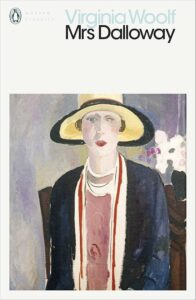
Clarissa Dalloway is an upper-crust Englishwoman determined to throw a good party on the night of the day when the book is set. Her husband Richard works in the government, won’t make it into the Cabinet, and at lunchtime helps an establishment lady write a letter to The Times with a public-spirited suggestion, or at least what Lady Bruton thinks is public spirited. Naturally, it is about what other people should do to advance her notions. Peter Walsh surprises Clarissa with an unannounced visit at a scandalously early hour. He has returned from India, hoping to engage lawyers to get his latest love a divorce, hoping also that his friends, such as Richard Dalloway, can get him a job appropriate to his station and interests. Peter had been in love with Clarissa when they were young adults, and she had rather returned the sentiments, but she had also spurned his offer of marriage in favor of the more solid and ambitious Richard.
Continue reading
Permanent link to this article: https://www.thefrumiousconsortium.net/2024/12/14/mrs-dalloway-by-virginia-woolf/
Happy December, readers! This is our only December pre-Christmas book roundup this year, so hopefully you’ll find some amazing reads in this list to gift to your nearest and dearest (which definitely includes yourself!)
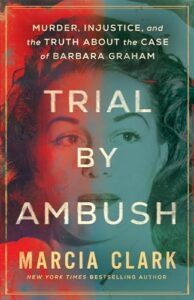 First up, we have the latest book from one of my favorite lawyers turned crime writers, Marcia Clark. Her non-fiction tome Trial By Ambush is subtitled Murder, Injustice, And The Truth About The Case Of Barbara Graham.
First up, we have the latest book from one of my favorite lawyers turned crime writers, Marcia Clark. Her non-fiction tome Trial By Ambush is subtitled Murder, Injustice, And The Truth About The Case Of Barbara Graham.
Unwanted and neglected from birth, Barbara had to overcome the odds just to survive. Her beauty was both a blessing and a curse, offering her too many options of all the wrong kind. Her innate sensitivity left her vulnerable to the harsh realities of the street, where she was left to fend for herself before she even reached double digits. Her record of petty crimes spoke to a life that constantly teetered on the brink of disaster.
In 1953, a catastrophic twist of fate would catapult her out of obscurity and into the headlines. When a robbery spiraled out of control and escalated into a brutal murder, Barbara became the centerpiece of a media circus. Her beauty enraptured the press, who were quick to portray her as a villainous femme fatale despite abundant evidence to the contrary — a fiction that the prosecution eagerly promoted.
The frenzy of public interest and willful distortion paved a treacherous path for her. In this dramatic true account of the power of sensationalized crime, Ms Clark — who knows a thing or two about the subject — investigates the case and exposes the fallacies in the demonizing picture they painted as well as the critical evidence that was never revealed. In the process, she exposes sexism, a flagrant disregard for the truth and ultimately the dangers posed by an unbridled prosecution.
Continue reading
Permanent link to this article: https://www.thefrumiousconsortium.net/2024/12/13/tantalizing-tales-december-2024-part-one/
As the year winds down, let’s look ahead at one of the most anticipated releases of 2025!
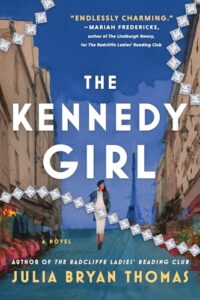 In 1961 New York, a modeling scout appears seemingly out of nowhere, complimenting twenty-one-year-old Mia’s Jacqueline Kennedy look and offering her a one-way ticket to Paris. All she can think is: why not?
In 1961 New York, a modeling scout appears seemingly out of nowhere, complimenting twenty-one-year-old Mia’s Jacqueline Kennedy look and offering her a one-way ticket to Paris. All she can think is: why not?
Even so, she’s a bit surprised to arrive and find that she does indeed have legitimate employment at a famous fashion house, strutting down runways, attending glamourous galas… and passing cryptic messages to unsettling strangers. Apparently, Jackie Kennedy is no longer the only woman for whom fashion and politics will dramatically collide.
From the far-reaching impact of the Cold War to the surprising relevance of fashion across societies to the significance of Paris in both history and fiction, Julia Bryan Thomas’ The Kennedy Girl expertly blends its themes in a refreshing and surprising way. It follows newly orphaned Mia, who abandons her ordinary American life in favor of the alluring Parisian fashion scene, where she finds herself embroiled in global espionage.
Read on for an excerpt from one of Mia’s covert operations…
Continue reading
Permanent link to this article: https://www.thefrumiousconsortium.net/2024/12/12/the-kennedy-girl-by-julia-bryan-thomas-excerpt/
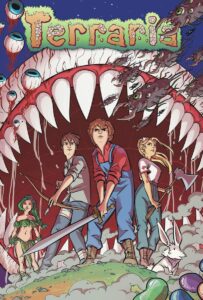 with colors by Digikore and letters by the talented Dave Lanphear.
with colors by Digikore and letters by the talented Dave Lanphear.
So let’s be honest: I found this book entirely confusing. It doesn’t help that the entirety of the second chapter was presented not backwards but bizarrely out of order. It was about Vale and Levi going to look for answers in other people’s homes, maybe? That lack of attention to detail doesn’t inspire confidence in the final product, which has apparently had its actual publication date pushed back several times. Or it might be out already! Details online are very confusing still.
What I can gather from the digital edition I read is that the book is based on a video game of the same name (which I’d never heard of despite being part of a family of gamers.) It seems to be a pretty open sandbox where you get to decide how you play, whether as a village sim, a quest RPG or a hack and slash. The main character Vale is clearly a stand in for the average player, as he’s been adopted by a small village and has a cute pet rabbit named Alma. When a battered teenager falls on his adopted family’s doorstep one day, claiming to be the only survivor of a neighboring zombie-ravaged village, Vale and various other family members go on a quest to find out what’s going on. Bloodshed and heroics inevitably ensue.
Continue reading
Permanent link to this article: https://www.thefrumiousconsortium.net/2024/12/11/terraria-volume-1-by-grant-alter-brendan-j-vogel-matt-clingempeel-iwan-nazif/










